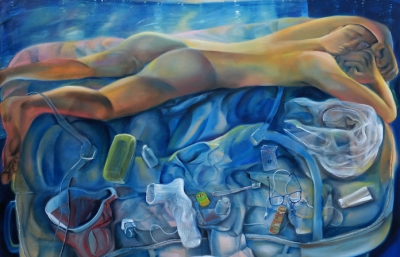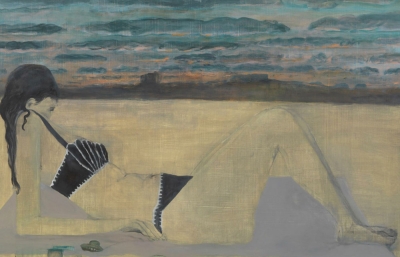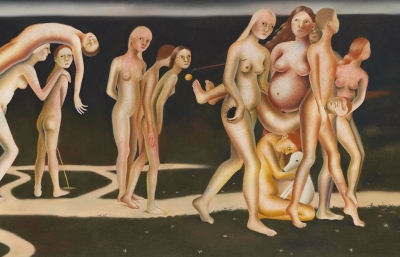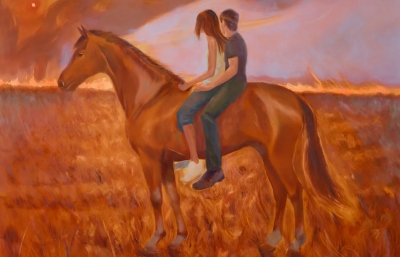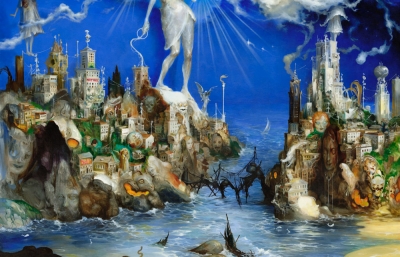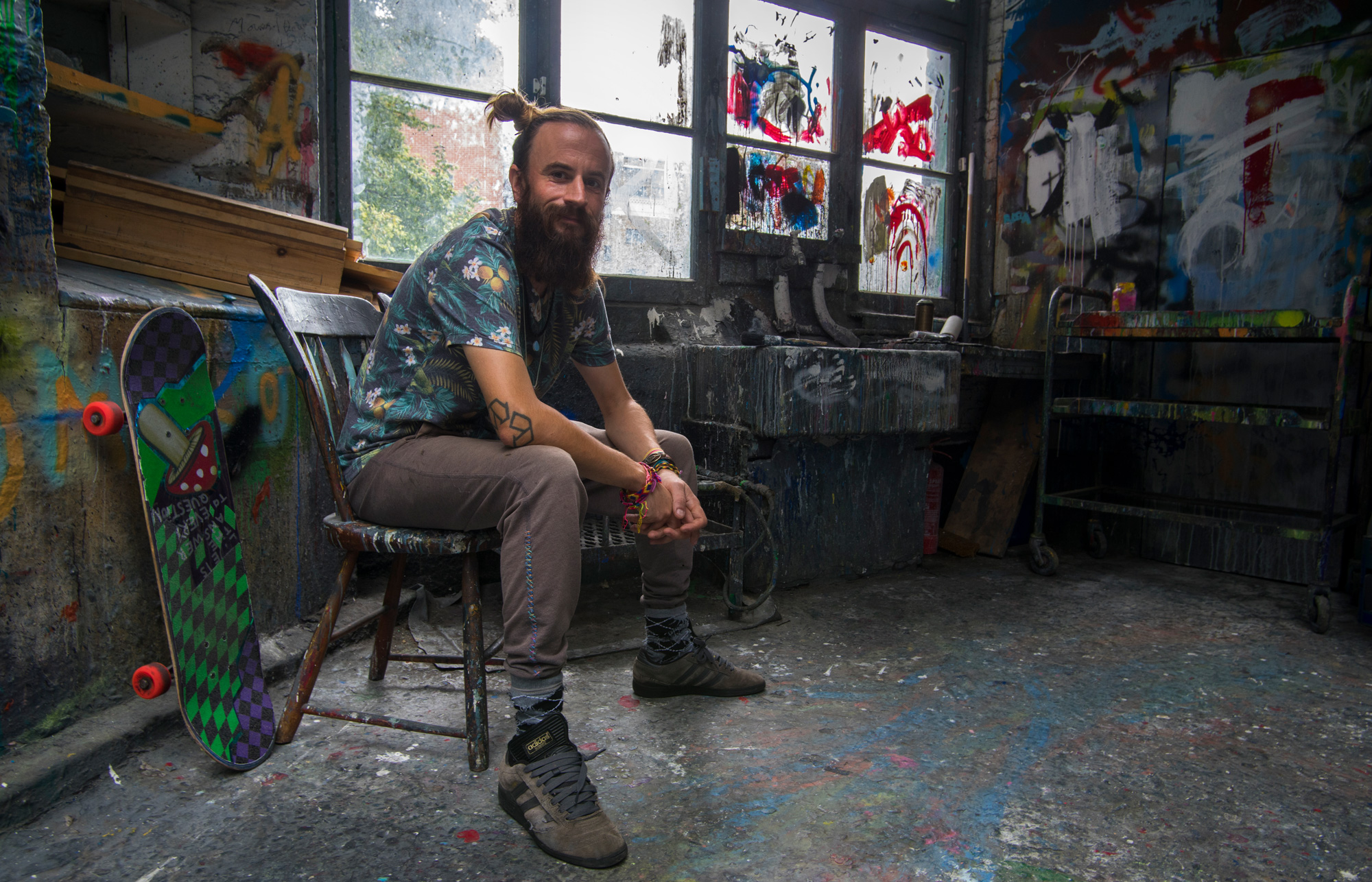
Adam Neate
Entering Dimensionalism
Interview by Ben Jones // Portrait by Ian Cox
Paintings on walls are free for the viewing, freely on display and free of ownership. Way back when UK-based Adam Neate was a little-known graffiti artist, he added another dimension to the notion of street art liberation by leaving thousands of paintings on the street to be snatched up or trashed at random. Those lucky few who got hold of one got a rarity: a unique piece of urban art that would never be tagged over.
These days, Neate’s name is synonymous with the ongoing self-branded Dimensionalism series, a massively successful studio-based practice in which he combines the conceptual complexities of space-time theory with handcrafted, limited edition consumer art multiples. Conversation with Adam is a multi-layered confluence of insights, philosophies and feelings, akin to walking slowly past one of his signature lenticular editions, where bright colors fuse and mutate around a strongly rooted image-form. Ben Jones connected with Adam through the ether to talk about the aesthetics of perdurance (and other) theories of life and art.
Ben Jones: It's approaching a decade since you stopped making street art. Do you miss the directness, the flow, or the anonymity of that way of working? Or is your studio-based practice open-walled enough to unleash these instincts into your easel paintings in a more concentrated, energetic form?
Adam Neate: The past ten years has been a great creative journey for me. I often reference the visual template of "The Hero's* Journey" to gauge my own pinpoint in time (*I am in no way a hero, just the protagonist in my own life story).
I would say my “call to adventure” was my street art. It gave me the anonymity needed to experiment with different styles and techniques. I left over six-thousand individual paintings around the streets of London, as well as cities like Tokyo, Paris, New York and São Paulo. It allowed me to explore the world around me and my own creativity at the same time.
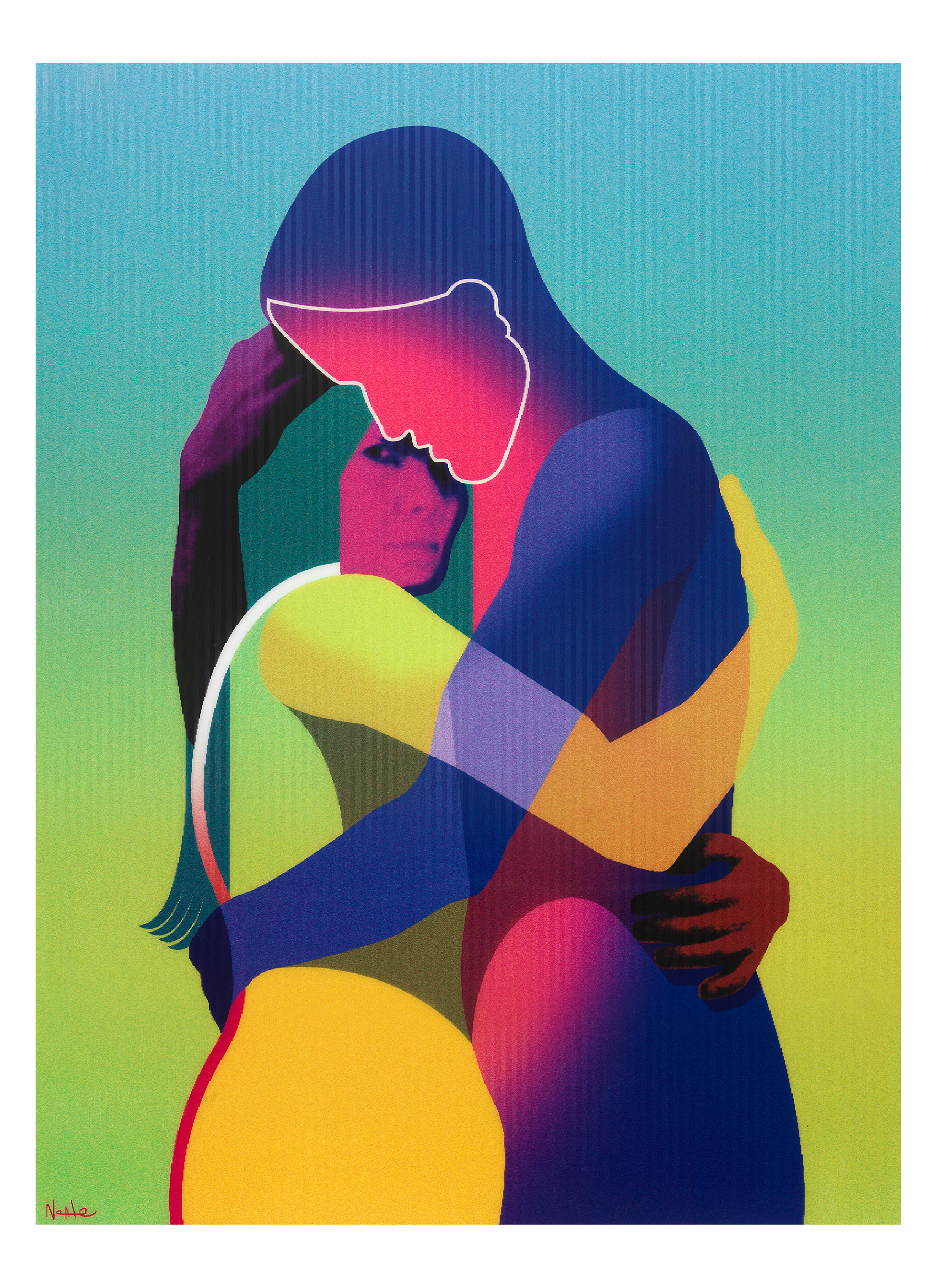
I had a day job to put food in the fridge, so my graffiti and street art had a freedom of their own to express themselves. Emptying six spray cans on a wall to create an image in a few hours is always fun!
Ten years on, I feel I'm at the "fourth threshold" of creatively, going full circle. The beauty within this cycle is how the paradox of duality has played out for me: from my initial “free art” notion of trying to separate art from a gallery concept, to currently creating low-edition handmade multiples as online consumer art, giving me the creative freedom to express anything, be it real or virtual. Freedom drives creativity!
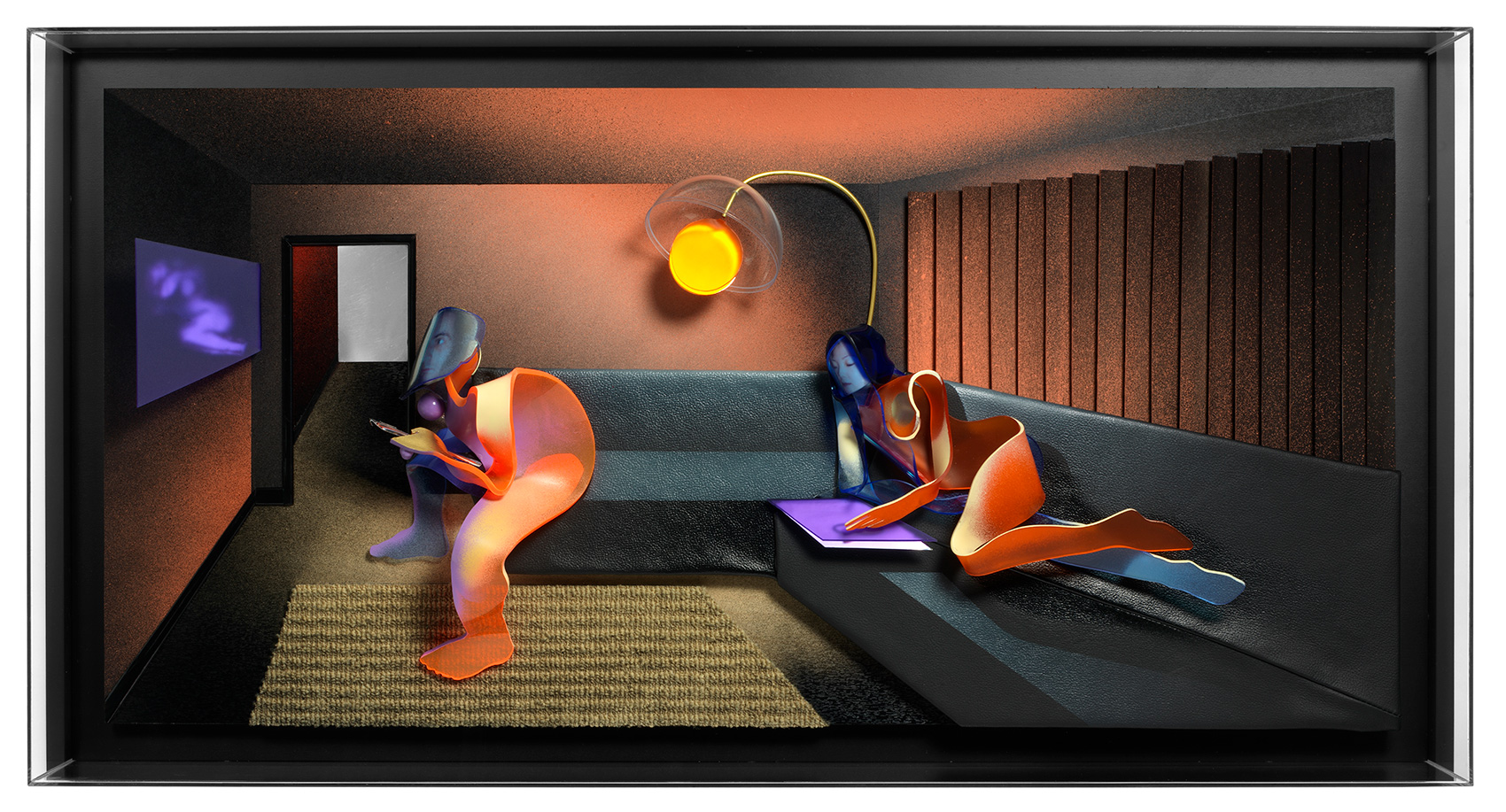
There’s an exhibition at London’s Royal Academy, Matisse in the Studio, about objects and places in the artist's life that play repeated roles within his paintings and build up a multi-layered, formal, symbolic and emotional language. We've seen the English seafront feature increasingly in your work over the years, as well as windows, balconies, chairs, and drinking glasses. Do you think of inanimate objects as your cast of characters, or do they serve a more symbolic or archetypal purpose?
We are held within this realm through the aid of objects and materialism. Being able to drink a cup of tea from your favorite cup always adds to the experience. I find the use of such simple day-to-day objects extremely grounding in relation to modern life. I use them both as characters and symbols. Sometimes it's just nice to depict an object like a glass of water which, in some ways, can be seen as a timeless image or concept.
I love to use balconies, which can set the scene for an array of emotions—a contemplation point for jumping, or a romantic sunset with someone you love. You are always kind of half in, half out, standing on a balcony.
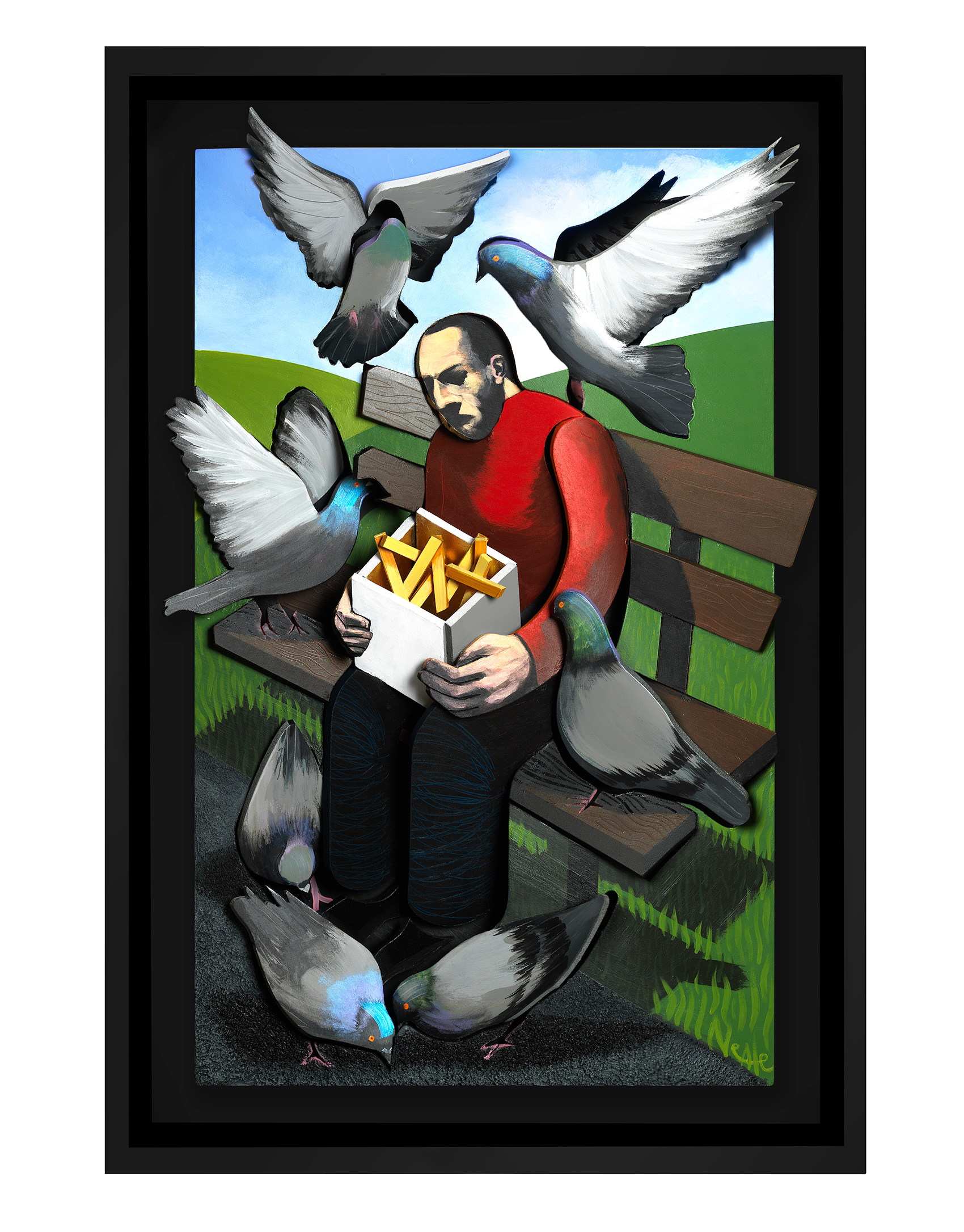
A lot of the bolder images often refer back to an archetype of some sort. A more complex image composition may contain hidden archetypes and symbols; for example, my 2015 portrait Getting Ready for Work where, within the painting, you have the water bottle nozzle in the shape of the Eye of Horus and a rooftop behind it in the shape of a pyramid. The Eye of Horus water bottle overshadows the hand of the man preparing for his work. He is ironing out the creases in his trousers. Through the placement of the ironing board, it gives the illusion he has one trouser leg rolled up, though really the right trouser leg is buried deep within the washing basket, which also kind of looks like something else. The color orange also plays a key role in this piece.
The electronic screen plays a role in your work as early as 2011 with Home Entertainment, then in paired paintings from 2013’s Reclining Nude and Social Recluse, where the ability to interact physically or emotionally among individuals has been stunted by their absorption in the datasphere. Is your take on our screen-based lives entirely negative? Do you use a smartphone or operate a social media avatar
The advancement of technology has always been a double-edged sword for me. With progression comes regression in some other form. The rise of social individualism through technology with smart phone apps like Facebook and Instagram can help create algorithms tailored to everyone’s personal needs in the form of a gilded-matrix-cage-echo-chamber of information the individual may believe is stimulated by their own personality. But, unknown to many, they are being spoon-fed information depending on their previous “likes”, cookies, searches and overall browsing habits. With the advent of quantum computers, huge databases will be able to store every individual's online and offline experiences and will have a personality profile of each life. We are in the teething stages at the moment, where people are sometimes overwhelmed with access to so much content and information that they are becoming more insular in fear of missing out on information. A happy balance of real life and online would be the optimal choice. No, I don't own a smartphone… I have until 2020 when 2G will be phased out to figure out what to do!
Do you listen to music while you're working? What's in your head, soundwise, at the moment?
Currently, I'm going through a phase of watching and reassessing old American ’90’s MTV apathetic Generation X music videos. Pre-mass internet, ’90's music videos were a key information and indoctrination source for creative people. It's amazing what songs and lyrics do and do not stand the test of time.
Let's talk about Dimensionalism, your term for a method of working you've explored since 2009. Being, by its nature, a time-based visual medium, art has always found interesting ways of exploring the temporal in spatial terms. Tell us about the new dimensional territory you've been exploring.
In developing a visual language, working to visualize creative concepts in higher dimensions than the traditional 2D and 3D, I began to experiment with different depictions of the passage of time and space in unison, as a combined composition. Once this was achieved, the visual concept could then be re-interpreted back into a 2D or 3D-painted or sculpted form. The beauty of dimensional painting in VR is that your creative expression is instantly already in 4D as you are able to walk ’round the painting and record the process of the work in 2D video. For the Brighton Sunset [2016] painting, I chose a scene where the couple's stances and positions are momentarily frozen for a short passage of time as they are both deep in different thoughts. The bodies are only slightly distorted due to the small movements they may make during that time period.
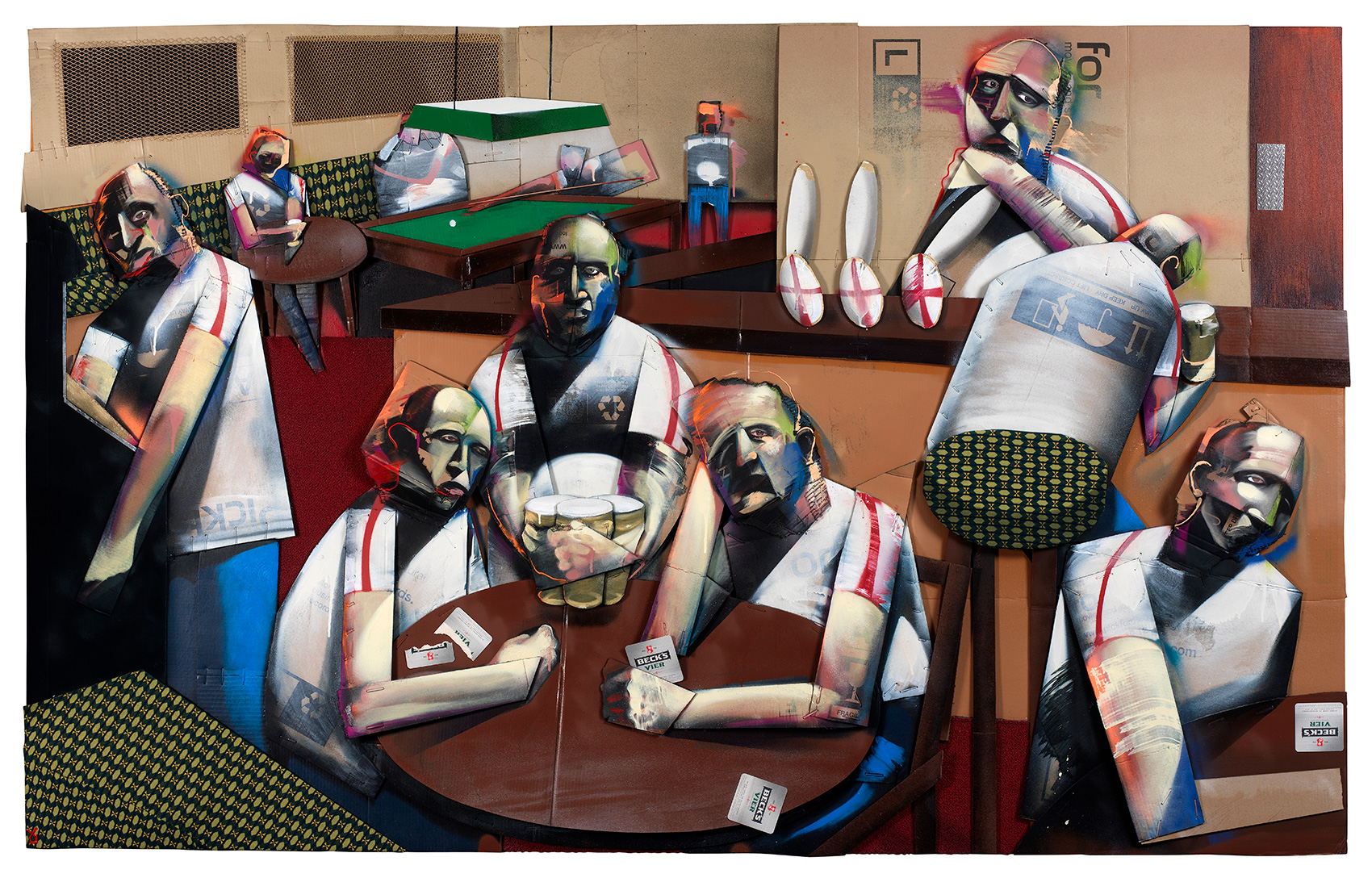
A dimensional artist can train one's mind to compartmentalize time and space in relation to events happening around the subject matter. You can mentally create a scenario in 5D or hyperspace, for example, of a man at a bar drinking, like in No Way Out from 2011. As the creator, you can sit in the front row seat and observe and organize the potentiality of all possible outcomes that would occur from drinking at a bar and whatever movements or interactions could possibly occur through the duration of the timeline you may wish to depict. Thinking dimensionally has been used by many ancient cultures to attain pure awareness, i.e., seeing from the higher self. This is the realization that our existence is comprised of numerous strands of possibilities running alongside each other.
From the higher self, you can choose which possibilities you may wish to synchronize. Through pure intention, all energy, be it with thought or physical power that is spread out across numerous potential timelines, can be filtered and compressed into one single reality utilizing the potential energy that all of the other possibilities may have contained. No energy is lost, merely converted. The ideal dimensional composition would look and feel like a literal slice of reality in front of you.
In Photobomb, one of your largest paintings to date, you employ lateral slices of the same reality occurring simultaneously. It's a fascinating conundrum of a painting featuring two self-portraits, two phone screens and a mirror. What a printed reproduction might not convey is that it's six separate pictures painted, sculpted, printed in multiple different media. What was the starting point for this complex spatiotemporal interlacing?
After studying 4- and 5-dimensional space-time concepts during my period of Dimensional painting, I was inspired while watching a TV police show where a gang of criminals were caught solely from their smartphone data. The police were able to access the phone data to show the time and date of the individual conversations of each gang member, their GPS location and movement and the images stored on each phone. Combining the data they were able to construct a timeline of events for the lead-up to the crime, thus collapsing other possible timeline scenarios to conclude with a strong case of evidence against them. Creating a history out of data, be it true or false depending on the data source, says much about the nature of our reality.
If a beautiful woman suns herself by the beach alone, but never tells anyone, who is to know this event occurred or even that she was beautiful? The modern smart phone can capture such a moment to give evidence, but if more than one person captures the same image at the same time, who has true ownership of the moment? No one, everyone, or the individual being photographed? Currently, the anomaly known as “the cloud” seems to compensate for this grey area by storing it for future reference, which may one day be cross-referenced with other images to give structure and credibility to the event having taken place. This painting makes reference to the idea that our future-past events will be reconstructed in much more accurate detail than in any other time in history so far. The painting depicts my future self entering a virtual reconstruction of an event in an earlier part of my life. Within this virtual reality concept, I am able to cycle past myself and film my original self from a different viewpoint. In the painting, my original self has just noticed the older grey-haired imposter cycling towards him, much to his annoyance. The top middle canvas segment is made from aluminium to denote the captured universal composition for whoever takes the photo, a moment that now exists digitally. The other canvases are framed around the woman, each one holding their own individual compositions as images. At the same time, they have been stitched together to create a larger narrative picture.
So, do you go along with simulation theory?
The very short answer… yep! We are living in the past of our future selves. Soon after the birth of AI, a human's entire life experience will be able to be uploaded onto a super computer's hard disc, where others can re-live past life experiences of each other. With the advent of the transhuman agenda and VR, people will have the opportunity to live in a virtual computer game world indistinguishable from our current reality. As we, as a species, slowly destroy the planet's resources, more people will choose to live virtually, with the added incentive of being able to live eternally in a digital realm. Unfortunately, the computational construct of this reality can be perceived in a fractal form, i.e., we are already living in a simulation within a simulation. The recent film "Valerian" best depicts the pros and cons of this concept.
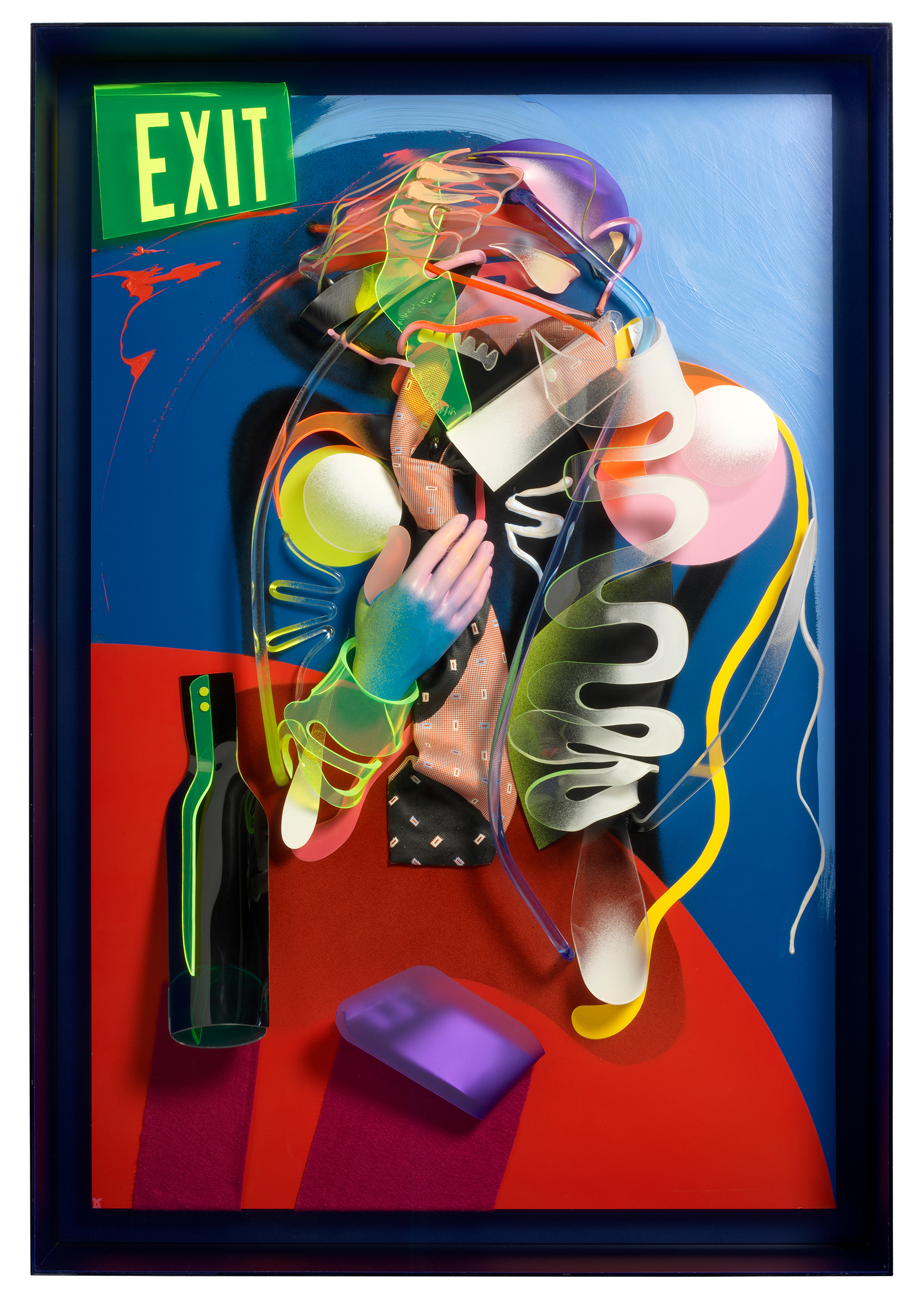
Personally, I've always felt that the humour in your work has been underappreciated. The mindless groupthink of tribal behaviour in drunken football supporters or besuited businessmen, the futile bailing-out-whilst-staying-put of The Ship of Fools. In my favorite, Feeding Time, there's the pathos of a quiet moment, al fresco British dining invaded by too much nature, whilst protruding from their Escher-like box—the interlaced initials A and (backwards) N are spelled out in chips. Is this the veiled symbolism of what it feels like as an artist to have a feeding frenzy of art collector pigeons around you the whole time?
From another angle, the chips also spell out the letters DMT, otherwise known as "the spirit molecule.” The Escher-like box has a gold leaf interior to reflect the radiance of the chip’s color. The iridescent birds surround him and almost uplift him as he stares down into the box of knowledge, suggesting a parallel to the knowledge that God is within the beauty of creation and nature at all times as man and nature feed off each other in a hopeful balance.
elmslesters.co.uk

